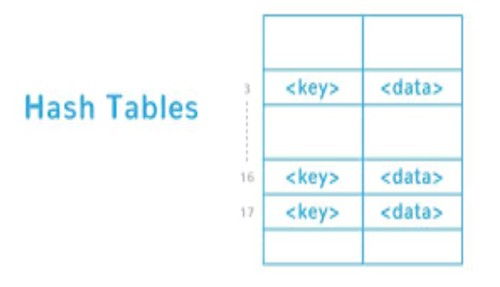Hash Tables are data structures that store key-value pairs. Hash Tables are commonly used in many types of databases and applications, as they provide a fast and efficient lookup mechanism. They use a hashing algorithm to calculate the index at which the value is stored in an array. To be more precise, when a key is provided, the Hash Table computes an index using the hash function, and then the value associated with the key is stored at this index.
The basic idea behind a Hash Table is that it uses a hash function to calculate the index at which a particular value is stored. The hash function takes a set of input values, such as a key, and maps it to an index in the table. This way, whenever a key is given, the hash function quickly calcualtes its index, making it easy for the table to access the associated value.
Example Implementation:
Let’s assume that we have a simple array of strings, and we want to use a Hash Table to store and look up values in the array. To do this, we need to define a hash function. We can use the built-in Java API for strings to define the hash function:
public int hashString(String s) {
return s.hashCode();
}Once we have defined the hash function, we can create a Hash Table and start adding elements to it. For example, let’s add the following key-value pairs to the Hash Table:
table.put("John", "Doe");
table.put("Jane", "Doe");
table.put("Jack", "Smith");Now, to look up a value in the Hash Table, we simply provide the key and the hash function will calculate the index at which it is stored. For example, if we want to look up the value associated with the key “Jack”, we can do:
String value = table.get("Jack");
System.out.println("Value is: "+value); // Prints "Smith"As you can see, a Hash Table provides an efficient lookup mechanism for key-value pairs, making it an incredibly useful data structure.




